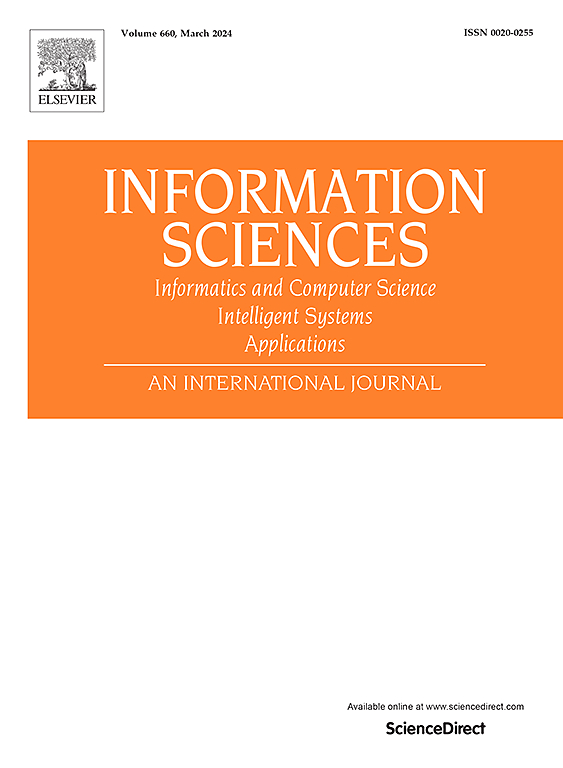Schrödinger基于方程的自适应dropout多颗粒特征增强网络,用于会话方面的情感四重分析
IF 6.8
1区 计算机科学
0 COMPUTER SCIENCE, INFORMATION SYSTEMS
引用次数: 0
摘要
本研究的重点是加强多回合对话中目标、方面、观点和情感四重情感的提取,这是会话情感分析中的一个难题。现有的方法经常遇到复杂的句子结构、多重情绪四重体的存在以及不相关的上下文信息干扰的挑战。这些挑战通常会导致次优性能。通过引入基于Schrödinger方程的自适应dropout多颗粒特征增强网络(SEAD-MGFE-Net)来解决这些限制,SEAD-MGFE-Net是一种将多颗粒特征提取与量子启发的自适应正则化协同的新框架。该方法采用多层树形结构将句子分割成语义连贯的片段,从而提高了方面和意见术语之间的一致性,同时降低了噪声影响。此外,我们设计了一个多角度动态邻接学习增强模块,该模块熟练地捕获了图结构表示中固有的局部和全局特征。此外,我们设计了一个基于Schrödinger方程的自适应退出机制,促进了整个训练过程中正则化强度的自动调制。在中文和英文的基准数据集上进行的广泛评估验证了我们提出的SEAD-MGFE-Net模型的最先进的有效性,微f1得分为46.53%(中文)和40.97%(英文),分别超过最强基线模型2.04%和1.57%。SEAD-MGFE-Net在提取交叉话语四联体和管理远程依赖关系方面表现出有效的效果。这些发现证实了SEAD-MGFE-Net在会话情感分析中的有效性和广泛适用性。本文章由计算机程序翻译,如有差异,请以英文原文为准。
SEAD-MGFE-Net: Schrödinger equation-based adaptive dropout multi-granular feature enhancement network for conversational aspect-based sentiment quadruple analysis
This research focuses on enhancing the extraction of sentiment quadruples consisting of target, aspect, opinion, and sentiment from multi-turn dialogs, which remains a challenging problem in conversational sentiment analysis. Existing methods frequently encounter challenges with complex sentence structures, presence of multiple sentiment quadruples, and interference from irrelevant contextual information. These challenges often result in suboptimal performance. These limitations are addressed by introducing Schrödinger equation-based adaptive dropout multi-granular feature enhancement network (SEAD-MGFE-Net), a novel framework that synergizes multigranular feature extraction with quantum-inspired adaptive regularization. The proposed methodology incorporates a multi-layer tree structure to segment sentences into semantically coherent fragments, thereby improving the alignment between aspect and opinion terms while simultaneously mitigating noise impact. Moreover, we engineer a multi-angle dynamic adjacency learning enhancement module that adeptly captures both local and global features inherent in graph-structured representations. Additionally, we devise an adaptive dropout mechanism based on the Schrödinger equation, facilitating automatic modulation of the regularization strength throughout training. Extensive evaluations on benchmark datasets in both Chinese and English validate the state-of-the-art effectiveness of our proposed SEAD-MGFE-Net model, achieving Micro-F1 scores of 46.53 % (Chinese) and 40.97 % (English), surpassing the strongest baseline models by 2.04 % and 1.57 %, respectively. SEAD-MGFE-Net exhibits efficacy in extracting cross-utterance quadruples and managing long-range dependencies. These findings confirm the effectiveness and broad applicability of SEAD-MGFE-Net for conversational sentiment analysis.
求助全文
通过发布文献求助,成功后即可免费获取论文全文。
去求助
来源期刊

Information Sciences
工程技术-计算机:信息系统
CiteScore
14.00
自引率
17.30%
发文量
1322
审稿时长
10.4 months
期刊介绍:
Informatics and Computer Science Intelligent Systems Applications is an esteemed international journal that focuses on publishing original and creative research findings in the field of information sciences. We also feature a limited number of timely tutorial and surveying contributions.
Our journal aims to cater to a diverse audience, including researchers, developers, managers, strategic planners, graduate students, and anyone interested in staying up-to-date with cutting-edge research in information science, knowledge engineering, and intelligent systems. While readers are expected to share a common interest in information science, they come from varying backgrounds such as engineering, mathematics, statistics, physics, computer science, cell biology, molecular biology, management science, cognitive science, neurobiology, behavioral sciences, and biochemistry.
 求助内容:
求助内容: 应助结果提醒方式:
应助结果提醒方式:


